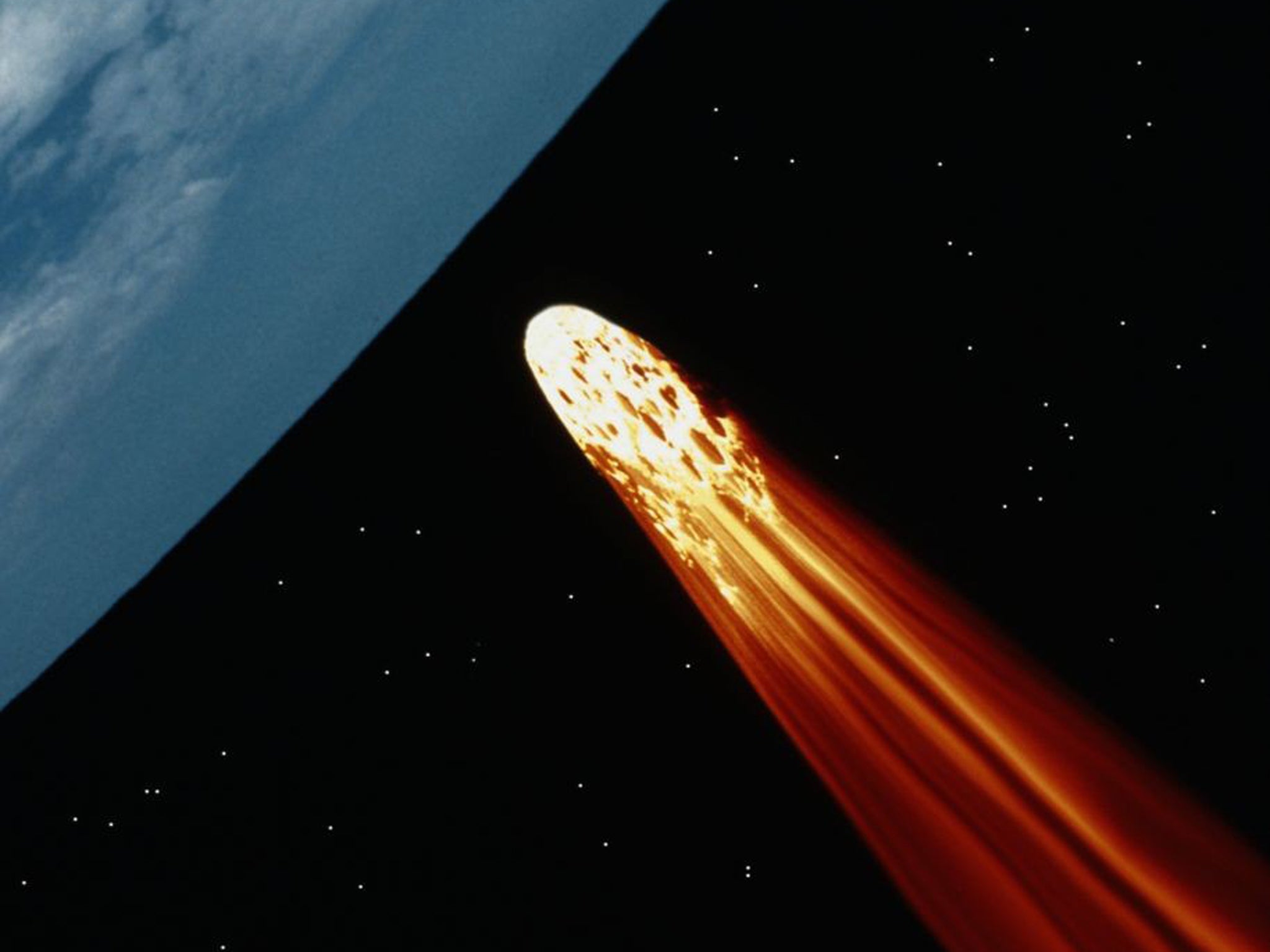Ukrainian astronomers discover 1,300 ft asteroid heading for possible devastating 2032 impact with Earth
Chance of collision is 1 in 63,000 – enough for 2013 TV135 to be added to Nasa’s Torino scale for risky near Earth objects

Your support helps us to tell the story
From reproductive rights to climate change to Big Tech, The Independent is on the ground when the story is developing. Whether it's investigating the financials of Elon Musk's pro-Trump PAC or producing our latest documentary, 'The A Word', which shines a light on the American women fighting for reproductive rights, we know how important it is to parse out the facts from the messaging.
At such a critical moment in US history, we need reporters on the ground. Your donation allows us to keep sending journalists to speak to both sides of the story.
The Independent is trusted by Americans across the entire political spectrum. And unlike many other quality news outlets, we choose not to lock Americans out of our reporting and analysis with paywalls. We believe quality journalism should be available to everyone, paid for by those who can afford it.
Your support makes all the difference.Ukrainian astronomers have discovered a large asteroid heading for Earth which could strike our planet on 26 August 2032, impacting with a force 50 times greater than the biggest ever nuclear bomb.
Its existence has been verified by teams around the world, in at least 27 distinct observations over the course of the past week, and Nasa has been forced to issue an earth impact risk summary as part of its Near Earth Object Program.
The 1,300 foot (400 metre) wide asteroid has been named 2013 TV135. There is a 1 in 63,000 chance of the asteroid striking earth – enough for it to be added to the Torino scale which measures the risk of all objects which could reach Earth in the next 100 years.
According to Nasa there is only one other asteroid that has made it to a 1 (out of 10) on the scale. At 130 metres wide, 2007 VK184 is nonetheless regarded as relatively high risk because it has a 1 in 1,820 chance of impacting Earth. All other near Earth objects are rated as a 0 – meaning their risk is “effectively zero”.
Gennady Borisov from the Crimean Astrophysical Observatory told the Itar-Tass news agency: “On the night of 12 October, I was watching the Giraffe constellation, it was an in-depth monitoring as part of the comet search program. This is when the asteroid… was discovered. The first observations show that it moves quickly and is relatively close.”
If it struck the earth, the impact from 2013 TV135 would cause damage to an area of approximately 100,000 square miles – the equivalent of x – with an equivalent force to about 2,500 megatons of TNT, or 2,500 standard nuclear warhead-bearing US Minute Man II missiles.
“Here’s a super-goal for our space industry,” said Russia’s deputy prime minister Dmity Rogozin, who is responsible for the country’s space programmes and has lobbied for Russia to develop asteroid defence systems.
Astronomers say they will continue to evaluate the risk posed by 2013 TV135, and that they may be able to pin down its exact path – and even a possible impact site on Earth – by the year 2028.
Join our commenting forum
Join thought-provoking conversations, follow other Independent readers and see their replies
Comments